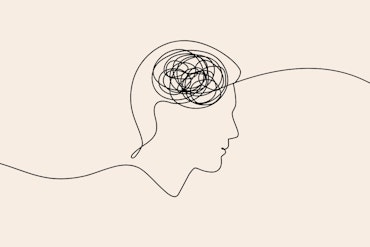One in three older Australians are given opioid drugs — why?
National Pain Week is held annually by Chronic Pain Australia to increase Australians’ awareness of the condition
![<p>Seeking solutions for chronic pain can be helpful but treatments including opioid medications should be used with caution. [Source: Shutterstock]</p>](https://agedcareguide-assets.imgix.net/news/articles/wp/yellowjumper2307.jpg?fm=pjpg&format=auto&w=550&q=65)
Seeking solutions for chronic pain can be helpful but treatments including opioid medications should be used with caution. [Source: Shutterstock]
Key points:
- Thirty-five percent of Australians who receive an opioid medication prescription are aged 50 years or older, as per data from the Australian Institute of Health and Welfare
- Barriers such as communication difficulties may prevent some older Australians with chronic pain from receiving appropriate pain management in aged care homes
- Health professionals warn that while opioids can provide short-term relief, patients and doctors may need to implement other treatment methods to manage chronic pain
National Pain Week is being held between July 22 and 28, 2024 by Chronic Pain Australia to increase awareness about how Australians are affected by chronic pain.
Twenty percent of Australians aged between 65 and 74 years report experiencing chronic pain, according to recent data from the Australian Institute of Health and Welfare.
Chronic pain is defined as pain that continues after initial healing should have ended. It lasts for more than three months, with pain ranging from moderate to severe.
According to researchers, ‘persistent, bothersome pain is a very common health issue in residential aged care facilities.’
However, some barriers such as communication difficulties and medication concerns may prevent older people in aged care homes from receiving appropriate pain management.
Older adults with chronic pain are at an increased risk of falls, living with disability and having reduced mobility.
Risk factors for chronic pain include being overweight / obese, smoking and limited physical activity.
Australians with chronic pain are also five times more likely to report that ‘their daily activities were limited a lot,’ compared with peers without chronic pain, as per recent data from the Australian Institute of Health and Welfare.
Paracetamol is the top pain relief choice for 72 percent of Australians for general pain management according to recent data from Haleon.
Elena Pintado, a representative of Haleon Australia and New Zealand, explained that Haleon’s recent research can help influence pain management products on the market.
“[…] By understanding more about how Australians choose to treat their pain and why, we can help ensure that all Australians have access to a range of pain relief options, strategies and plans that are right for them,” she said.
However, some Australians are not only using paracetamol and over-the-counter medicines to manage chronic pain. Opioid medications, such as oxycodone and codeine, can be prescribed by doctors to manage ongoing pain.
Leila Gray, a clinical psychologist at Banyans Healthcare in Queensland, emphasised the importance of Australians being aware of potential opioid side effects.
“Whilst treating long-term physical pain with opioids may provide some short-term relief, we must consider the impact these medications can have on longer-term increased pain as well as further mood disorders. A holistic approach is vital for treating the whole person with chronic pain,” said Ms Gray.
People who take opioids can become dependent on the medication if used for long periods, due to the nature of the drug type. Visit your doctor if you are concerned about becoming dependent on or addicted to opioid medication.
Thirty-five percent of Australians who receive an opioid medication prescription are aged 50 years or older, according to recent information from the Australian Institute of Health and Welfare.
Founder of Banyans Healthcare Ruth Limkin commented on the importance of increasing Australians’ awareness of chronic pain and the lesser-known effects.
“[…] Despite affecting millions of Aussies, there’s not enough awareness, training or education relating to the mental health impacts of chronic pain,” she said.
“It’s common for people experiencing the complex condition to suffer alone with all help focused on addressing the physical pain, when the mental and emotional toll can be just as debilitating.”
Although medication can help to manage chronic pain, Ms Gray offered other recommendations, such as:
- practising mindfulness;
- participating in low-impact physical activity if possible e.g. walking, swimming and yoga;
- seeking further help from doctors and health professionals.
Ms Gray reiterated that if you are struggling with chronic pain, it’s important to consult your doctor when you have concerns.
“Staying silent and not talking through how you feel can worsen the symptoms of chronic pain significantly. We would encourage all people suffering from chronic pain to seek help from a healthcare professional,” she said.
Researchers in another study suggested that changing opioid dosing in older adults is ‘associated with mental health crisis events.’
If you are struggling with opioid dependence, free 24/7 support is available. You can have a confidential conversation with a counsellor by visiting the Counselling Online website.
How do you manage chronic pain as an older Australian?
Let the team at Talking Aged Care know on social media.
For more information and news in the aged care industry, subscribe to our free newsletter.
Relevant content:
Government response sparks concern for advocates of older Australians
Australian Government invests $4.8 million dollars to combat elder abuse
Up to 33 percent of older Aussies could be at risk of gambling harm























